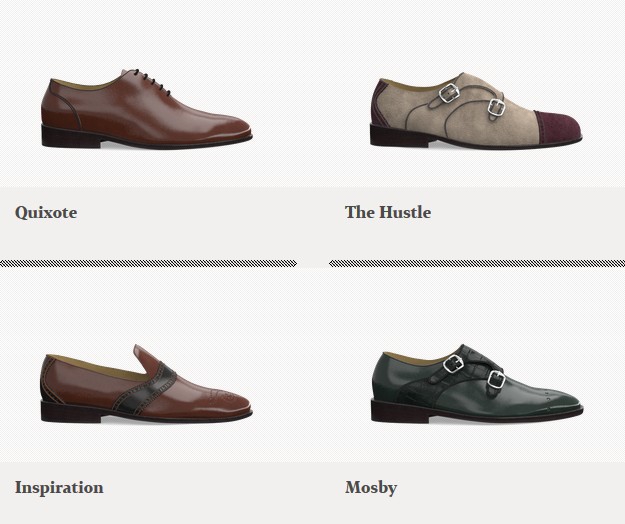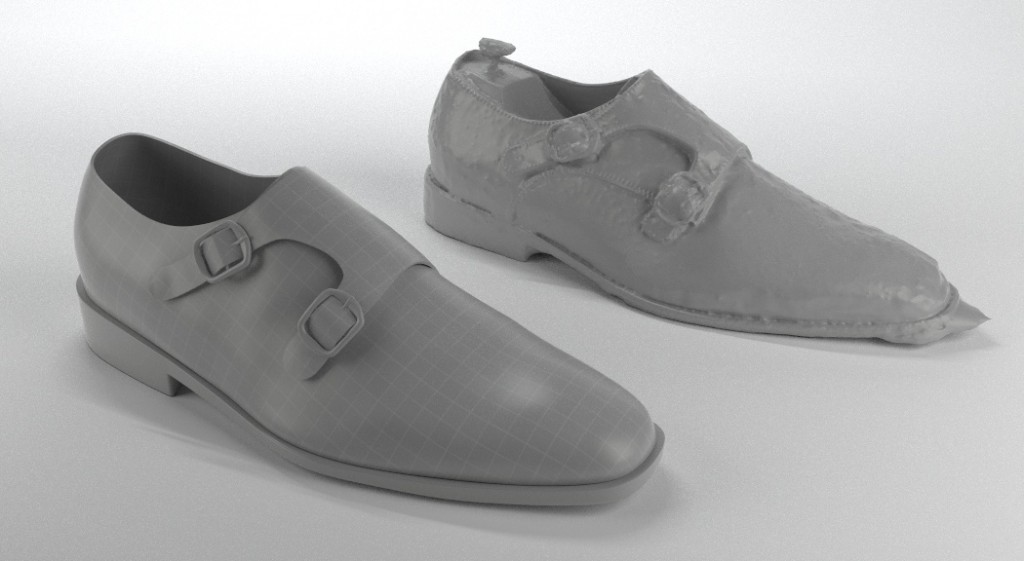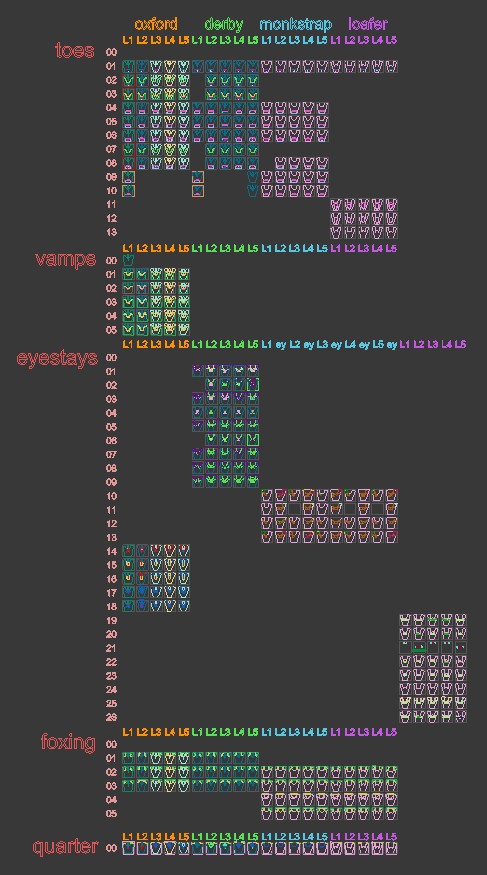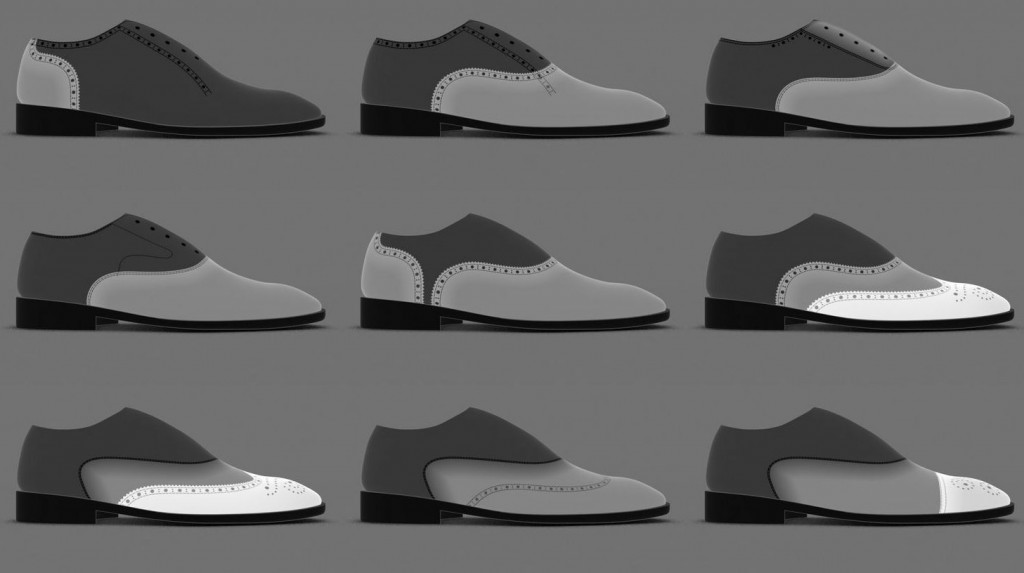Recently the online men’s shoe shop Awl & Sundry has launched. Awl & Sundry offers affordable, customizable men’s dress shoes. I’m proud to have helped to bring their configurator up to speed on multiple levels. Take a look on their website.
Configurator
Like many startups in ecommerce, Awl & Sundry had to manage many things at the same time: building a website, designing the user experience, designing the actual product, finding manufacturers, setting up databases and so on. Having a configurable product influences every piece of this business. Seemingly small tweaks in the beginning can go a long way and benefit you later. Setting up a product such as a shoe for configuration means a lot of logic has to be linked to it. I’ve helped Awl & Sundry getting grips on this. I’ve also consulted with them about how to setup their configurator.


3D models
Besides helping with the big picture I also created all 3D models of the shoes. The 3D models were then used to create millions of images you see on the site. This was done by the very capable guys at Motiva cg. The models were created based on 3D scans of physical shoes and a bunch of reference material. This is actually a very effective process to reproduce rather complex objects if no drawings are available. The physical shoes were scanned with an ordinary digital camera. The pictures were then processed by Autodesk recap 360 and converted into 3D models. Scans like these can’t be used directly but are great to be used as a base layer. Twenty base shoes were made like this. After that all design variations were created.


Macro micro
Each shoe consists of several parts such as a sole, toe, vamp, eyestay, foxing, laces and stitching. Before the final images will be rendered, which is a rather expensive process, all possible combinations need to be checked. Maybe some parts don’t fit together physically or aren’t stylish enough. This is very hard to predict without actually seeing the product. That’s why it’s very important to have previews of all combinations on the macro scale. At the same time we need to be able to modify each design individually on the micro scale. Since there’s never one preview this has been done over and over again until everything was just perfect. It’s clear that each step in this process is heavily automated to get consistent results.

In the end all planning, programming, and modeling results in a great website with a beautiful configurator. Go ahead and make your own!

